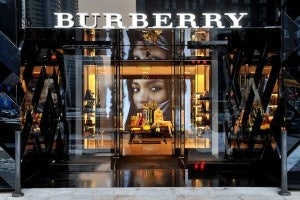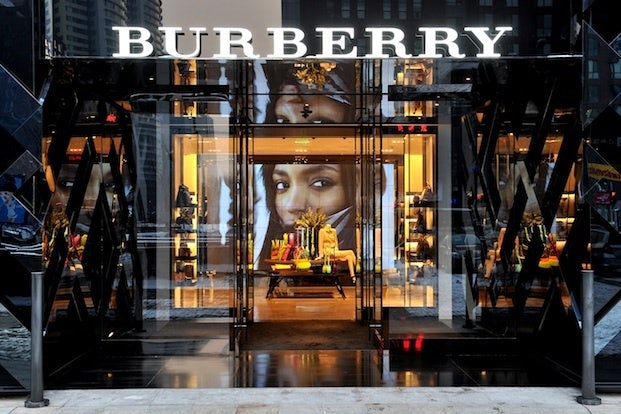“We Still See Enormous Opportunity In China"#

Though it remains one of the most successful high-end brands in the China market, this week Burberry reported lower-than-expected earnings on lower economic growth in the Chinese, European and US economies, signaling -- among some analysts -- the need for caution among the brand's luxury peers. According to the Financial Times, Burberry recorded a 11 percent year-on-year increase in its first-quarter revenues, hitting £408 million (US$635 million), missing forecasts of £418 million ($650 million). Although an impressive showing amid a troubled global economy, it pales in comparison to Burberry's 30 percent increase in Q1 2011.
So how much is China to blame for Burberry's showing? As Burberry CFO Stacey Cartwright told the FT, the brand's same-store sale growth halved in the three months up to June 30, from 30 percent last year to "the mid-teens" in 2012. Cartwright denied that the slowdown was due in part to the brand's aggressive expansion in China -- Burberry now 63 stores in China, with plans to possibly reach 100 -- saying, “We still see enormous opportunity in China, where the bulk of our stores were inherited from our former franchisee and they have on average 2,000 square feet per store.” Cartwright added that the brand is planning to increase its average store space in China to "3,500-4,000 sq ft at a minimum.” This sounds an awful lot like Louis Vuitton’s “big store strategy” (大店策略), which we saw last year manifest in the luxury giant's largest-ever store in China, an 1,800 square meter behemoth in Guangzhou, and in the upcoming Shanghai "Maison," opening later this month.
Despite disappointing sales figures in the first quarter of this year, Burberry's massive expenditure on improving existing spaces not only within China, but in the kinds of destinations frequented by wealthy Chinese tourists, means there's reason for optimism. Burberry has been far more successful in the digital realm in China than any other brand with the possible exception of Louis Vuitton, and its global flagships in New York, Hong Kong and London remain shopping meccas for globetrotting Chinese.
